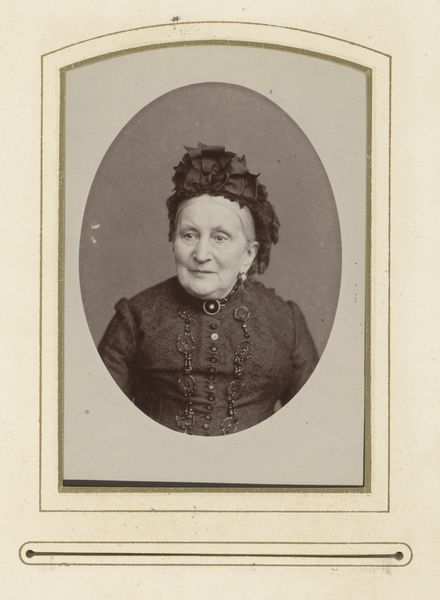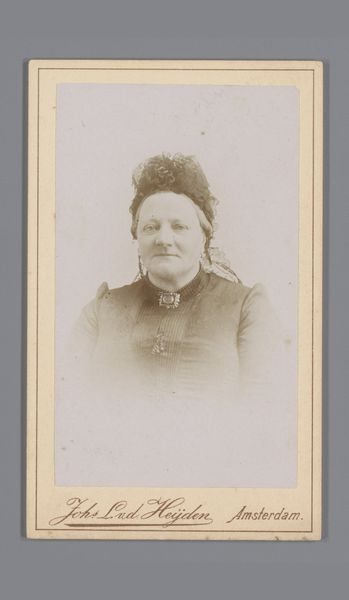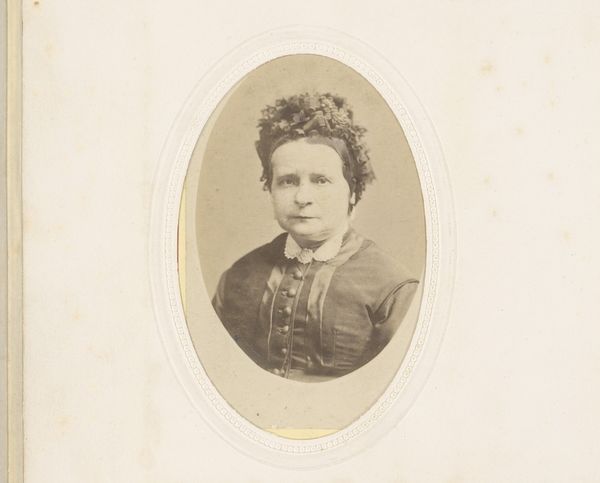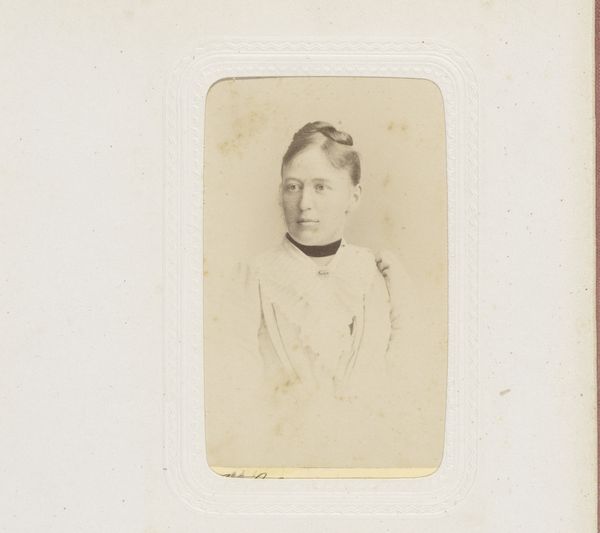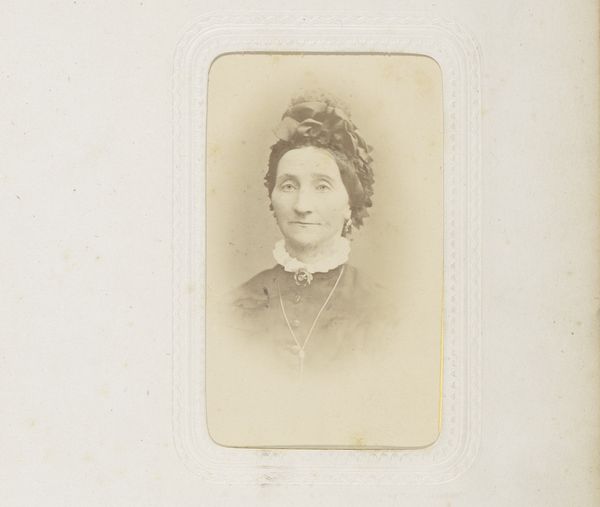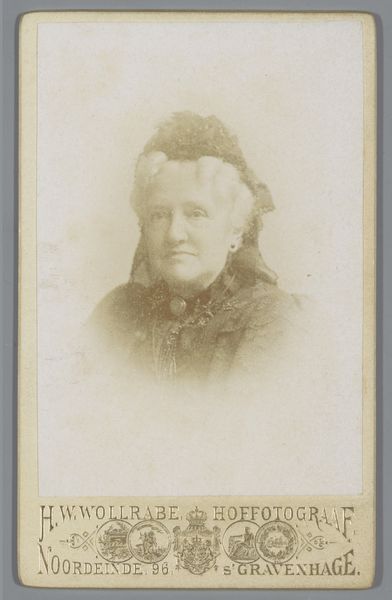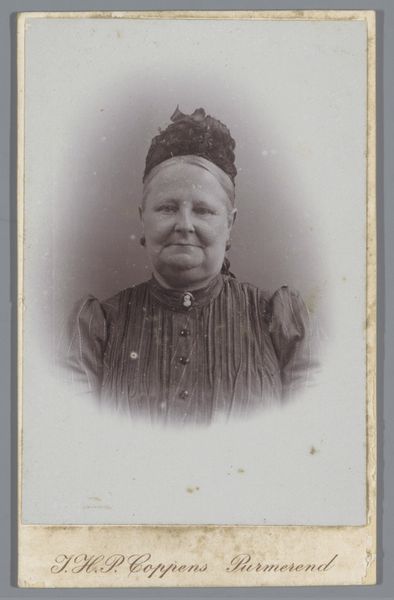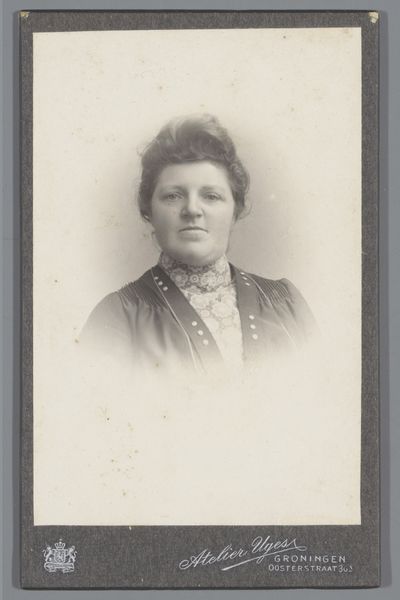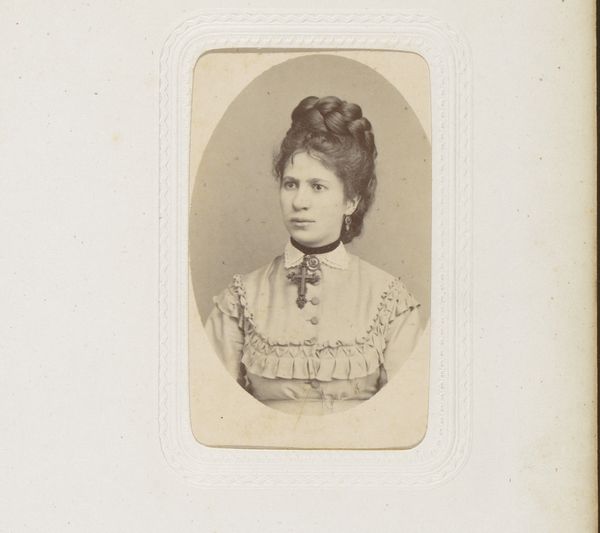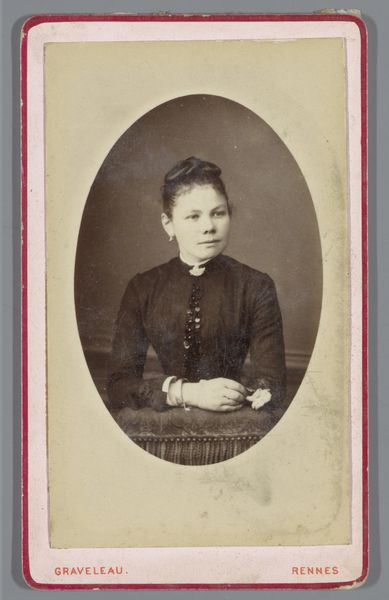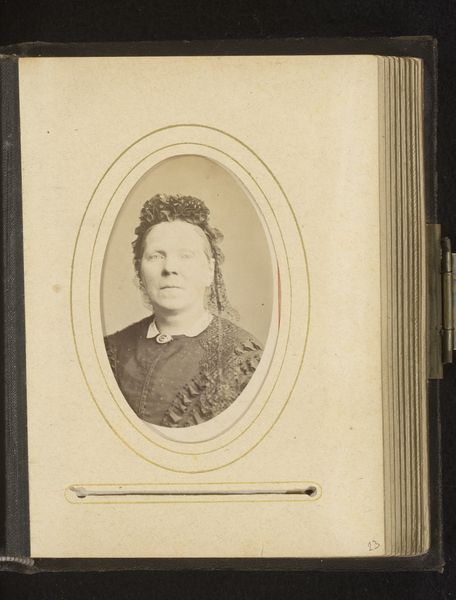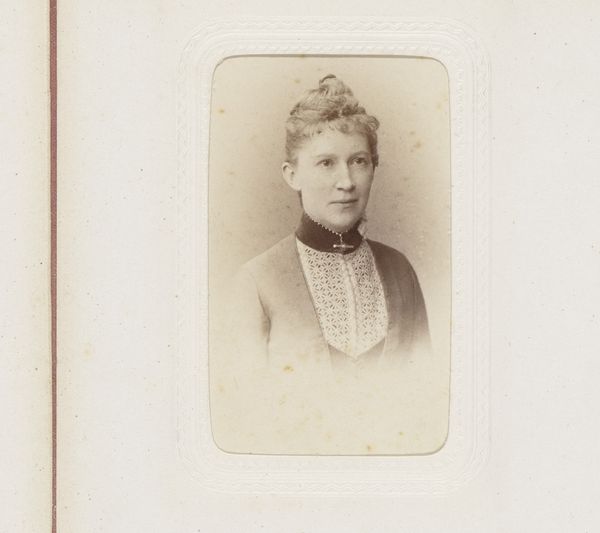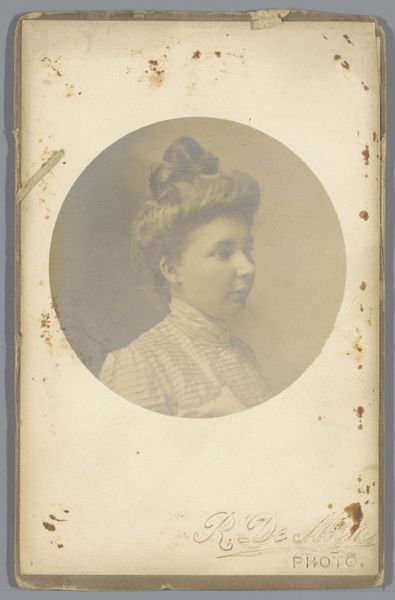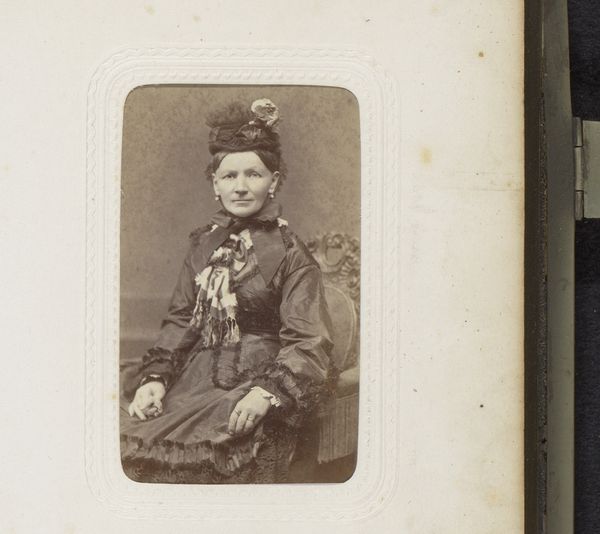
photography, gelatin-silver-print
#
portrait
#
photography
#
historical photography
#
portrait reference
#
gelatin-silver-print
#
19th century
Dimensions: height 84 mm, width 52 mm
Copyright: Rijks Museum: Open Domain
Curator: This gelatin silver print is titled "Portrait of an Old Woman," and it was taken sometime between 1880 and 1890 by Carel Eduard Westerborg. It resides here at the Rijksmuseum. What are your first thoughts? Editor: My immediate impression is one of quiet dignity. The subdued tones and oval framing lend the image a sense of intimate solemnity. There's a history etched into her face, but her eyes remain soft, almost melancholic. Curator: It is a compelling study in aging. Photographic portraits at this time were rapidly growing in popularity across a growing middle class, and helped democratize portraiture once reserved for the upper classes. What symbols or visual cues do you pick up on? Editor: The lace bonnet and the brooch certainly speak to a specific era and social standing. Lace, traditionally a symbol of wealth and status, now more broadly represents modesty and respectability. The placement of the brooch, centered just below her neck, almost acts as an anchor. Curator: Precisely, and we can interpret its placement almost like an official seal or badge. In the Victorian era, mourning jewelry, for example, held great cultural significance, although I see no overt symbols to confirm if that's the case here. It's likely a simple decorative adornment for the photograph. I am curious, given that you sense melancholy, how does that interplay with what might otherwise be construed as an empowered image? Editor: It's in the direct gaze, really. She isn’t avoiding the camera; she’s presenting herself with composure. The subtle downturn of her lips contrasts with that steadiness. Her expression conveys both vulnerability and resilience, the result of a life fully lived, with its sorrows and triumphs. The lack of background distractions truly concentrates our attention on that gaze. It humanizes her, I think. Curator: It also marks a distinct shift in portraiture as photography matured. Rather than aiming for idealized depictions, photographers increasingly captured more naturalistic and even psychological portrayals of their subjects. So we move away from a type, an ideal, toward the individual, with her own story etched into her face as you mentioned. Editor: This image reminds me that behind every portrait is a human being—a lived existence shaped by the tides of time, now imprinted and captured through the photographer’s artistic and technical skill. It makes you consider the stories held within families. Curator: Indeed, Westerborg has offered us not just a photograph but an enduring glimpse into a human experience of aging, representation, and photographic development at large.
Comments
No comments
Be the first to comment and join the conversation on the ultimate creative platform.
